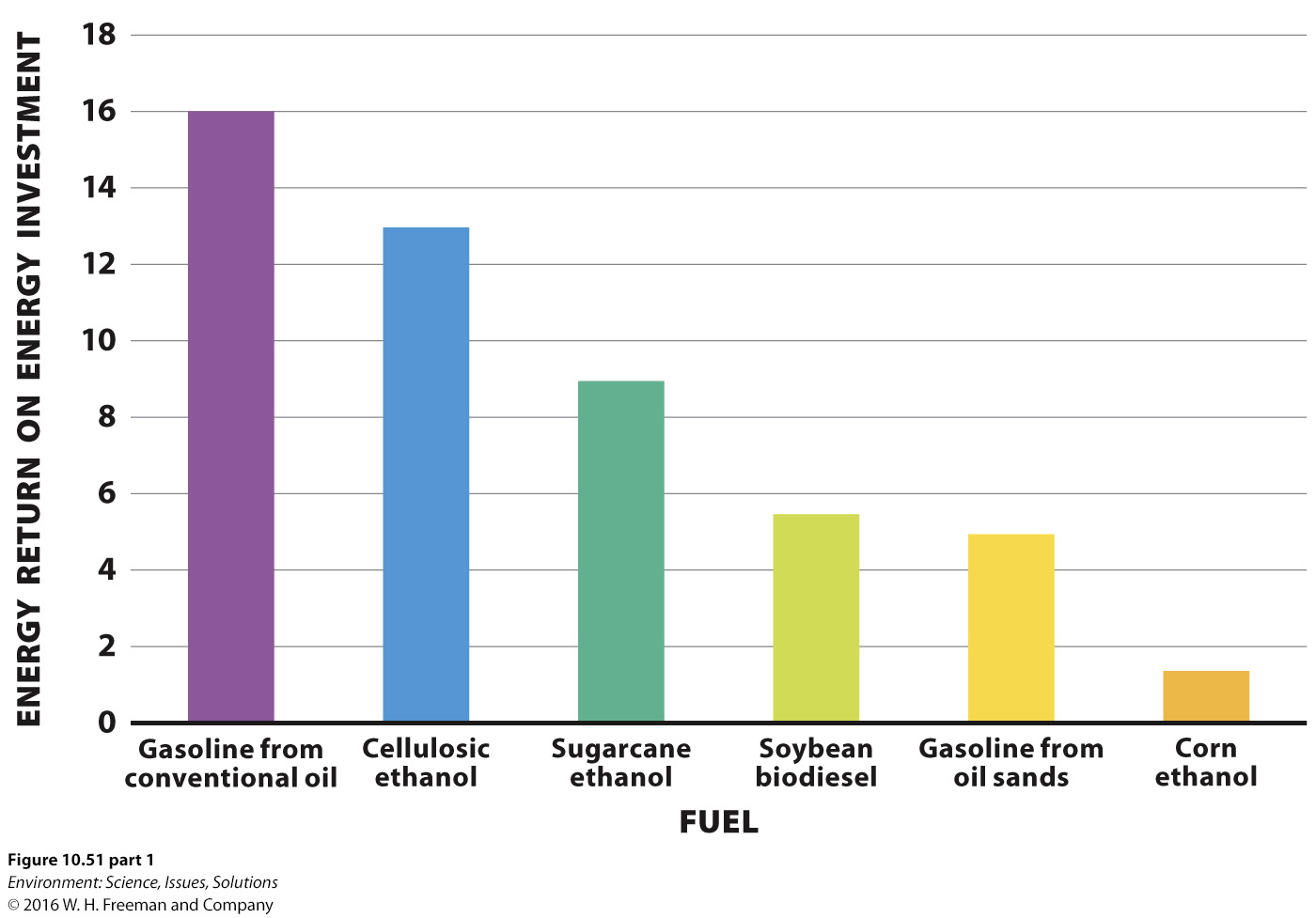My Slide Activities
Critical Analysis Question
Introduction
Chapter 10. Critical Analysis Question
Introduction
My Slide Activities
true
true
You must read each slide, and complete any questions on the slide, in sequence.
Critical Analysis Question:
Even though producing ethanol from corn is simpler, why are major energy companies investing heavily in the development of cellulosic ethanol?
To formulate your answer, first consider these additional thought questions:
Questions 1 & 2
1.
Select all of the following examples that are used to produce ethanol. Palm oil Switchgrass Corn Soybeans Zooplankton ::Palm oil: Southeast Asia contains many palm oil plantations for the production of oil used as both a food product and a fuel source.::Switchgrass: Switchgrass is a promising source of material for cellulosic ethanol production.::Corn: Corn production for the purpose of ethanol production accounts for about 30% of the U.S. corn crop.::Soybeans: Brazil’s soybean growing region is continuing to expand annually.::Zooplankton: Zooplankton are not used for ethanol production.1. Select all of the following examples that are used to produce ethanol.2.
What is EROEI?
A. B. C. D. CorrectIncorrect
Questions 3 & 4
Use the graph and compare the EROEI of various fuel sources. Of those provided, which fuel source has the highest EROEI?

3.
A. B. C. D. CorrectIncorrect3. Use the graph and compare the EROEI of various fuel sources. Of those provided, which fuel source has the highest EROEI?4.
Knowing that corn ethanol is simpler to make than cellulosic ethanol, which of the following are correct statements regarding why a company would invest heavily in cellulosic ethanol production? Select all that apply. Cellulosic ethanol is proving to be promising for development in temperate regions. Cellulosic ethanol has an energy return on energy investment (EROEI) that is 10 times lower than that of corn ethanol. Cellulosic ethanol has an energy return on energy investment (EROEI) that is 10 times greater than that of corn ethanol. The costs associated with its production are continuing to fall rapidly. Cellulosic ethanol is proving to be promising for development in tropical and subtropical regions. ::Cellulosic ethanol is proving to be promising for development in temperate regions.: Sugarcane ethanol and soybean biodiesel are best produced in tropical and subtropical climates, so having a fuel source that is successfully grown in temperate regions, such as source material for cellulosic ethanol, is very important.::Cellulosic ethanol has an energy return on energy investment (EROEI) that is 10 times lower than that of corn ethanol.: Cellulosic ethanol’s EROEI is 10 times higher than that of corn ethanol.::Cellulosic ethanol has an energy return on energy investment (EROEI) that is 10 times greater than that of corn ethanol.: Cellulosic ethanol has nearly the same EROEI as gasoline derived from conventional oil.::The costs associated with its production are continuing to fall rapidly.: Currently, a major expense in the production of cellulosic ethanol is the cost of source organic material.::Cellulosic ethanol is proving to be promising for development in tropical and subtropical regions.: Cellulosic ethanol’s fuel sources, such as switchgrass, can successfully be harvested in temperate regions, as opposed to other ethanol sources like sugarcane ethanol and soybean biodiesel that are produced in tropical and subtropical climates.4. Knowing that corn ethanol is simpler to make than cellulosic ethanol, which of the following are correct statements regarding why a company would invest heavily in cellulosic ethanol production?
Critical Analysis Question
5.
Now we return to the original Critical Analysis Question: Even though producing ethanol from corn is simpler, why are major energy companies investing heavily in the development of cellulosic ethanol?
10.1 Activity Completed!
Activity results are being submitted...